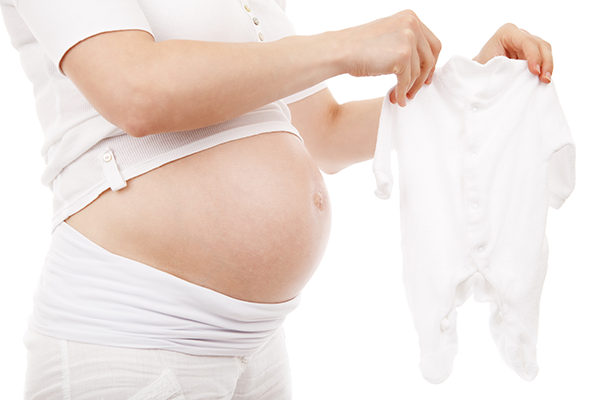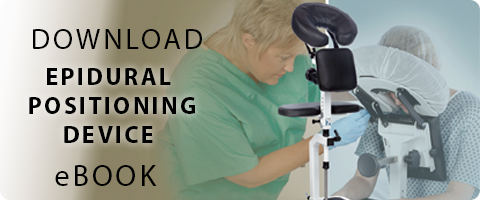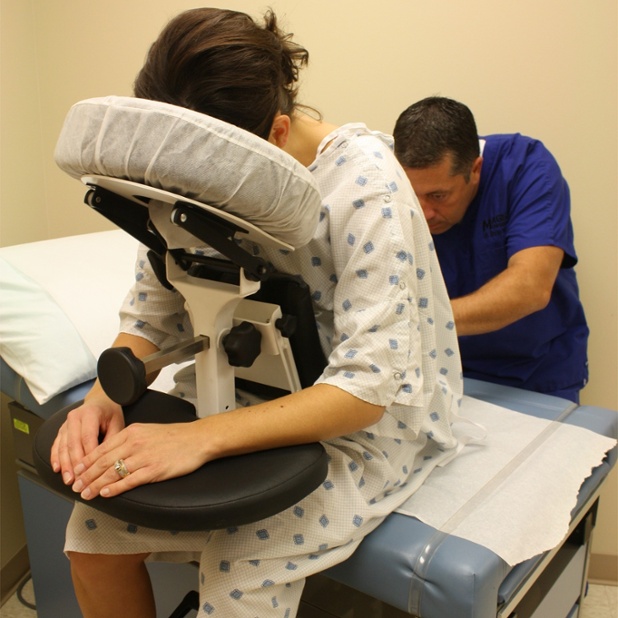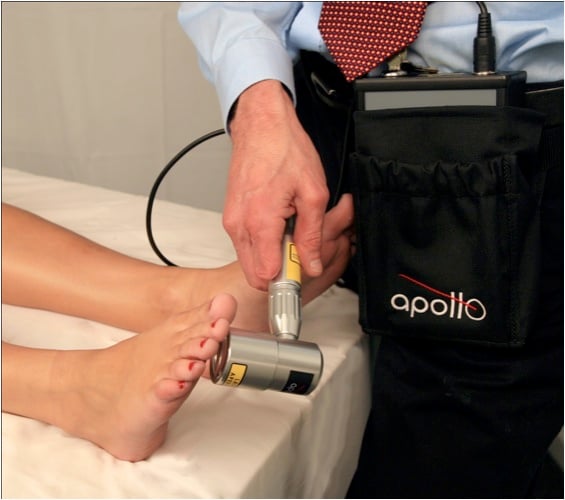 Preparing for the arrival of a child is an exciting time for potential mothers, but there is a lot to consider. Pregnant women and their partners need to make decisions on how they want to bring their child into the world. Whether by natural, drug-assisted or surgical means, there are associated risks and benefits across the board, depending on the circumstances.
Preparing for the arrival of a child is an exciting time for potential mothers, but there is a lot to consider. Pregnant women and their partners need to make decisions on how they want to bring their child into the world. Whether by natural, drug-assisted or surgical means, there are associated risks and benefits across the board, depending on the circumstances. Childbirth has evolved significantly over the years. During the Middle Ages, childbirth was in the hands of the midwife, usually sitting in the upright position. In the 1700s, new technologies began playing a role in childbirth, such as the development of forceps and a vectis. The 20th century brought childbirth from the home to the hospital, where hi-tech devices and procedures - such as the fetal heart rate monitor, cesarean sections (C-sections) and epidurals became commonplace. By the late 1970s in the US, home birth rates fell to around 1%.
The Rise of the C-Section
Fast forward to the present day, and the business of childbirth looks very different from its early origins. The Centers for Disease Control and Prevention (CDC) report that there were over 3.9 million births registered in the US in 2012. Of these, over 2.6 million were delivered vaginally, and nearly 1.3 million were delivered via C-section.
Additionally, the vast majority of these births took place in a hospital; only 1.4% of deliveries occurred elsewhere. Of these, over 65% took place at home and 29% occurred in a birthing center.
In 2009, the total C-section delivery rate reached an all-time high, at 32.9%, which represented a 60% increase from the most recent low in 1996, at 20.7% of all births.
Given this significant spike, the American College of Obstetricians and Gynecologists (ACOG) issued clinical guidelines in February of this year to reduce the occurrence of C-sections that were not medically indicated, as well as labor induction before 39 weeks. These guidelines included initiatives aimed at improving prenatal care, changing hospital policies and educating the public.
C-sections are deemed medically necessary when circumstances make a vaginal birth risky for the mother or baby. For example, physicians or midwives may recommend one when the fetus is in the breech position - when the baby's buttocks or feet are facing the pelvis rather than the head - or when the placenta is covering the cervix - called placenta previa.
We recently reported on a study published in August of this year that suggested breech babies have a higher risk of death from vaginal delivery than C-section.
C-Section Risks
However, some women opt for elective C-sections when there is no medical reason to do so. Speaking with Medical News Today, Dr. Sinéad O'Neill, of the Irish Centre for Fetal and Neonatal Translational Research, cautioned that this procedure is a serious abdominal surgery that carries certain risks:
"For the mother, these may include infection, clots, hemorrhage, a longer recovery period, and although rare, an increased risk of uterine rupture in subsequent deliveries. For cesarean section babies, respiratory problems requiring treatment in the neonatal intensive care unit are more common. It must be stressed that a cesarean section is an abdominal surgery and all surgeries carry risk."
In detail, the team found that women who had a C-section in their first live birth had a 14% increased rate of stillbirth and a 9% increased risk of ectopic pregnancy in their next pregnancy, compared with women who had a vaginal delivery.
In an ACOG report on safe prevention of primary C-section delivery, researchers note that "for most pregnancies, which are low-risk, C-section delivery appears to pose greater risk of maternal morbidity and mortality than vaginal delivery."
Although the National Institutes of Health note that vaginal births after cesarean (VBAC) are successful 60-80% of the time, Dr. O'Neill says that failed VBACs are associated with an increased risk of uterine rupture, and C-sections become riskier with each subsequent surgery.
"Ultimately, midwives and obstetricians must be able to discuss with women their options for birth after a cesarean section and whether a normal birth would be possible drawing from the evidence base and knowledge, and taking into account a woman's medical history," she told us.
To Drug or Not to Drug?
Another aspect of childbirth that pregnant women face is how to manage pain. The Bible's Book of Genesis has God condemning Eve to painful childbirth for eating the forbidden fruit ("In pain you shall bring forth children"), but modern medicine has uncovered causal biological mechanisms behind the pressure women experience during labor.
During the active labor stage, contractions begin to get stronger, longer and closer together.
There are three stages of labor:
- Stage 1: early, active labor
- Stage 2: the birth of the baby
- Stage 3: delivery of the placenta.
The first stage entails a thinning and opening phase when the cervix dilates and thins out to encourage the baby to move down into the birth canal. This is when women will experience mild contractions in regular intervals that will be less than 5 minutes apart toward the end of early labor.
According to the Mayo Clinic, for first-time moms, the average length of this early labor is between 6-12 hours, and it typically shortens with subsequent deliveries.
Most women report that early labor is not especially uncomfortable, and some even continue with their daily activities. During the active labor portion of the first stage, however, the contractions begin to get stronger, longer and closer together. Cramping and nausea are common complaints, as is increasing back pressure. This is the time when most women head to the place in which they want to give birth - whether it is at a hospital, birthing center or in a designated area at home. Active labor can last up to 8 hours, and this is typically when most women who desire an epidural request one.
Spinal and epidural anesthesia are medicines that numb parts of the body in order to block pain. Administered through a catheter placed in the back or shots in or around the spine, these medicines allow the woman to stay awake during labor.
Though these medicines are considered generally safe, they do carry certain risks and complications, such as allergic reactions, bleeding around the spinal column, drop in blood pressure, spinal infections, nerve damage, seizures and severe headache.
Epidural Risks
In May of this year, MNT reported on a study conducted by Dr. Robert D'Angelo, of Wake Forest University School of Medicine in North Carolina, and colleagues, which examined the serious complications of anesthesia.
These complications included:
- High neuraxial block - an unexpected high level of anesthesia that develops in the central nervous system
- Respiratory arrest in labor and delivery
- Unrecognized spinal catheter - an undetected infusion of local anesthetic through an accidental puncture of an outer spinal cord membrane.
After examining data on more than 257,000 deliveries between 2004-09, the researchers found that there were only 157 complications reported, 85 of which were anesthesia-related.
They concluded that, given the large sample size, anesthesia complications during childbirth are "very rare." Though an aim of their study was to identify risk factors associated with the complications in order to devise formal practice guidelines, because the complications linked to anesthesia were so rare, there were too few complications in each category to identify the risk factors.
When asked the question of how, in light of other epidural side effects - such as it interfering with the natural birth process or slowing dilation - he would advise women contemplating epidural or natural birth, Dr. D'Angelo told us:
"Unfortunately, childbirth is very painful and no modality relieves labor pain as effectively as epidural analgesia. We do our best to educate patients about the risks and benefits of epidural analgesia, support and encourage natural childbirth when they are considering this option and make ourselves available should they change their minds as labor progresses."
He added that research suggests epidurals only slow the first stage of labor by 45 minutes and the second stage of labor "by about 15 minutes."
What Can Natural and Alternative Birthing Methods Offer?
In the wake of increased C-section rates and women opting for medicine-induced pain relief, there are still women who want to do things the natural way - or as close to it as possible. For such women, there are a number of different options that can help to ease the pain of labor naturally and even prevent certain negative outcomes.
In a study on yoga during pregnancy published in the journal Complementary Therapies in Clinical Practice, the researchers note that the stress of labor itself can cause changes in a birthing mother's body:
"Childbirth pain evokes a generalized stress response, which has widespread physiological effects on a woman's parturient and fetus. Maternal catecholamine production increases, which affects the labor process by reducing the strength, duration and coordination of uterine contractions."
By managing this stress response, laboring women "have been able to transcend pain and experience psychological and spiritual comfort," the researchers add.
In their study, they found that an experimental group of women who were randomized to participate in a yoga program during gestation had higher levels of maternal comfort during labor, experienced less labor pain, and had a shorter duration of the first stage of labor as well as the total time of labor, compared with a control group that did not participate in the yoga program
Another study that investigated the effect of hypnosis on labor and birth outcomes in pregnant adolescents found that the hypnosis group showed better outcomes in terms of complicated deliveries, surgical procedures and length of hospital stay, compared with a control group.
Techniques such as pregnancy yoga during gestation and hypnosis training can reduce anxiety and improve pain tolerance during labor. The use of hypnosis in preparing the patient for labor and delivery is based on the premise that such preparation reduces anxiety, improves pain tolerance (lowering the need for medication), reduces birth complications, and promotes a rapid recovery process.
Through this method, participants gain a sense of active participation and control by learning about the birthing process and alternative ways to produce anesthesia within the body naturally, through the release of endorphins - pain-fighting neurotransmitters.
Because water has endorphin-releasing effects on the body, many women also opt to combine their hypnosis method with a water birth, which employs the use of a birthing pool.
"Research done thus far indicates that the use of hypnosis consistently reduces anesthesia complications and facilitates a reduction in discomfort and medication during the labor and delivery process," Dr. Schauble told MNT.
He added:
"I would strongly encourage women who were currently developing their birth plans to consider the addition of hypnosis as a means of preparing for the labor delivery process, thus increasing the likelihood of a comfortable and healthy birthing process."
Though there are a number of different options women can consider for their birth plans, experts from all approaches are in agreement that women should educate themselves and speak with their midwives or physicians in order to determine the course that is best for them.




